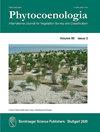2011年东日本大地震后的日本和Chinju-no-mori防海啸森林
IF 0.9
4区 生物学
Q4 ECOLOGY
引用次数: 3
摘要
2011年3月11日,一场大地震袭击了日本东部的东北地区。这次东日本大地震和随之而来的大海啸夺去了大约2万人的生命,尽管我们充分利用最新的科学技术,对自然灾害进行了最好的预测和准备。仅靠松树的防潮林并不能达到目的,但在地震和海啸中,当地潜在的自然植被也没有一棵倒下。为了在这样的高海拔地区生存,必须用本土树种的原生森林建造高海岸堤坝。灾区的大部分碎片在生态上是一种地球资源。在清除有毒物质后,应利用碎片在灾区300公里长的海岸沿线形成通风良好的土堆。土丘上混合密集种植根系发育良好的本地树种树苗。它们将成长为抵御海啸的原生森林,即“森林长城”。这种堤岸造林应该作为一项政府工程和一项全民运动来推广。本文章由计算机程序翻译,如有差异,请以英文原文为准。
The Japanese and Chinju-no-mori Tsunami-protecting forest after the Great East Japan Earthquake 2011
A great earthquake hit the Tohoku District, eastern Japan, on March 11th 2011. This Great East Japan Earthquake including great tsunami that followed claimed the lives of about 20,000 people, though we made best possible prediction and preparation for natural disasters with full use of the newest science and technologies. Tide prevention forests of pine trees alone did not serve the purpose, but not a tree from the local potential natural vegetation fell in the earthquake and the tsunami. In order to survive in such fl at areas, it is essential to build high coastal levees with native forests of indigenous tree species. Most of the debris from disaster areas is ecologically an earth resource. After removing poisonous materials, debris should be utilized to make well aerated mounds along the 300km-long coasts of disaster areas. Saplings of native tree species with fully developed root systems are planted mixed and densely on the mounds. They will grow to form tsunami-preventing native forests a “Great Wall of Forests”. This afforestation on embankments should spread as a government project and a national movement.
求助全文
通过发布文献求助,成功后即可免费获取论文全文。
去求助
来源期刊

Phytocoenologia
生物-植物科学
CiteScore
2.60
自引率
0.00%
发文量
7
审稿时长
>12 weeks
期刊介绍:
Phytocoenologia is an international, peer-reviewed journal of plant community ecology. It is devoted to vegetation survey and classification at any organizational and spatial scale and without restriction to certain methodological approaches. The journal publishes original papers that develop new vegetation typologies as well as applied studies that use such typologies, for example, in vegetation mapping, ecosystem modelling, nature conservation, land use management or monitoring. Particularly encouraged are methodological studies that design and compare tools for vegetation classification and mapping, such as algorithms, databases and nomenclatural principles. Papers dealing with conceptual and theoretical bases of vegetation survey and classification are also welcome. While large-scale studies are preferred, regional studies will be considered when filling important knowledge gaps or presenting new methods.
 求助内容:
求助内容: 应助结果提醒方式:
应助结果提醒方式:


